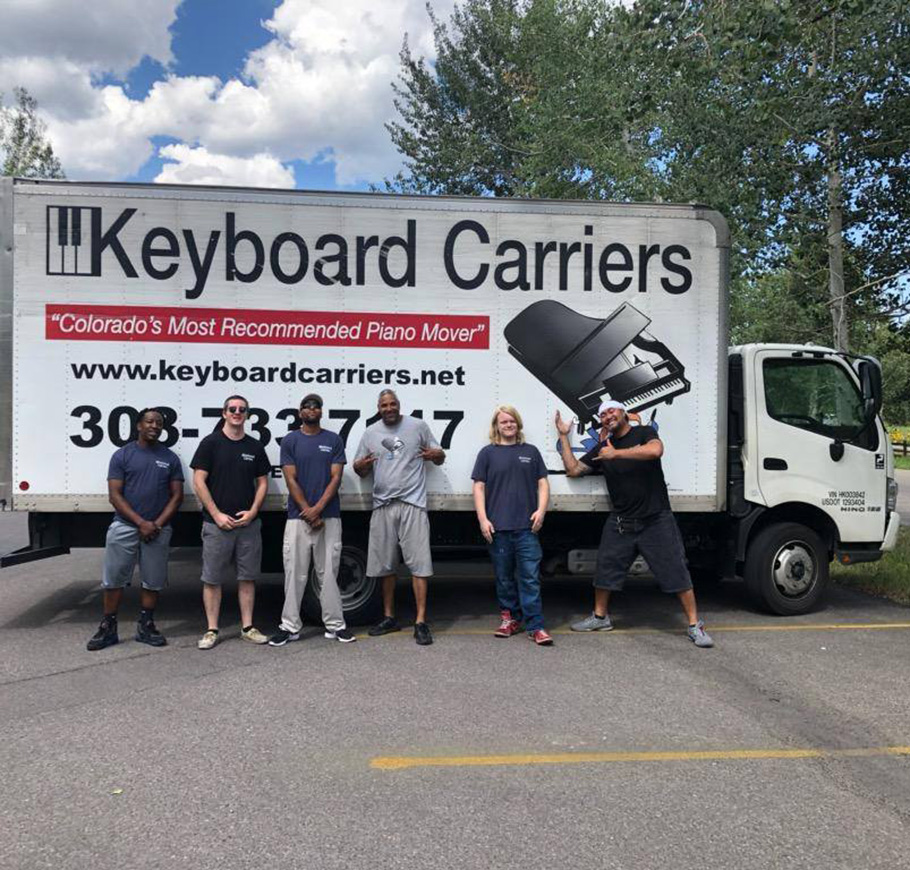Why Moving a Piano Is No DIY Project
Don’t Risk It: What Could Go Wrong
A quick online search reveals all the horror stories:
- “How to Move a Piano and Live to Tell the Tale”
- “Do’s and Don’ts of Moving Your Piano”
- “How to Avoid a Trip to the ER Moving Your Grand”
These titles aren’t just clickbait—they’re cautionary tales. Moving a piano isn’t like moving a couch. The instrument’s weight, shape, and fragility make it one of the most challenging items to relocate without professional experience.

Tired Muscles, Broken Backs, and Damaged Instruments
Even if you’ve moved furniture before, remember how exhausting that was? Now imagine doing that with an item weighing 300 to 1,200 pounds—and that item is mechanically delicate and emotionally priceless. One slip can cause costly repairs or permanent damage.
Piano Weights: Know What You’re Dealing With
Grand Pianos
- Baby Grand: 500–600 lbs
- Concert Grand (e.g., Steinway D): Up to 990 lbs
- Fazioli F308: 1,257 lbs
Upright Pianos
- Spinet: 200–300 lbs
- Studio/Upright: 300–500 lbs
Unlike a bookshelf or dresser, pianos have complex inner workings that can be easily misaligned with just the wrong tilt or bump.
The Equipment and Expertise Required
Moving a Piano Takes More Than Muscle
Here’s what professional piano movers like Keyboard Carriers bring to the job:
- Specialized piano dollies and skids
- Heavy-duty straps and padding
- Custom ramp systems
- Climate-controlled trucks
- Secure lifting techniques for staircases
We also know how to:
- Avoid common causes of in-transit damage
- Secure the piano safely in the vehicle
- Protect the pedals, legs, keys, and finish
- Disassemble and reassemble as needed
Compared to Other Heavy Items: The Pool Table Example
Moving a pool table involves:
- Disassembly
- Wrapping and protection
- Careful handling
- Reassembly and leveling
Moving a piano may not require complete disassembly, but it demands just as much precision and care. Why risk something so valuable?
Choosing the Right Piano Moving Company
Would You Trust an Antique Car to a General Mechanic?
Pianos are more than instruments—they’re heirlooms, investments, and emotional treasures. So don’t just hire any moving company. Choose professionals who specialize in piano logistics.
Questions to Ask a Piano Moving Company:
- How many pianos have you moved?
- Do you offer insurance coverage specifically for piano moves?
- What equipment do you use to protect the piano during the move?
- Can you handle stairs, tight hallways, or upper floors?
- Do you offer climate-controlled storage if needed?
The Keyboard Carriers Difference
At Keyboard Carriers, we’ve moved over 100,000 pianos and keyboards across Colorado. We’re Denver’s go-to team for:
- Uprights, grands, and digital pianos
- Specialty moves involving stairs, tight spaces, or hoists
- Safe, climate-controlled storage for short- or long-term needs
We handle every piano as if it were our own—because we know just how meaningful it is to you.
Frequently Asked Questions (FAQs)
1. Can I move a piano with friends if we’re careful?
We strongly advise against it. Pianos are not only heavy but also extremely sensitive to touch. One wrong move can damage internal parts, your property, or injure you in the process.
2. How much does it cost to move a piano in Denver?
The cost varies depending on the piano size, the number of stairs, and the distance. Most reputable piano movers charge a flat base rate, with add-ons for stairs or mileage.
3. Do I need to tune my piano after moving?
Yes. Even with the most careful handling, a piano should be tuned after it has acclimated to its new environment, typically within 2–3 weeks after the move.
Conclusion: A Better Way to Move Your Piano
So here’s your new Google headline:
“The Best Way to Move Your Piano? Hire a Professional.”
And if you’re in Denver, that professional is Keyboard Carriers. We bring 30+ years of experience and the kind of specialized service your piano deserves.
🎹 Request your free quote today or give us a call. Your piano’s future depends on it.
